Trolling Strip Baits for Kingfish And Grouper
Jacks are easy to catch and they do make great strip baits for trolling. They are also very tough bait good for at least a couple of hours of trolling. And the strip baits make great grouper bait.
Cutting out the strip bait.
When cutting out the strip bait the end result needs to be streamlined and symmetrical. Otherwise your bait will spin and the only thing you'll catch is a big knot in your line. The first step is to fillet both sides of the jack, cutting through the bones.

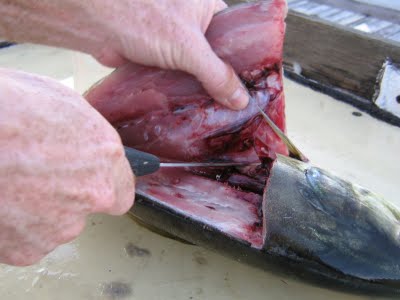
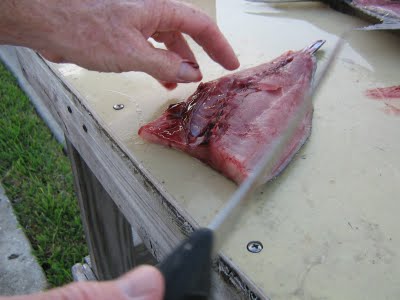
Now you will need to thin out the fillet by cut against the grain (from the tail end to the head end). You will want the fillet about 1/4 in thick.
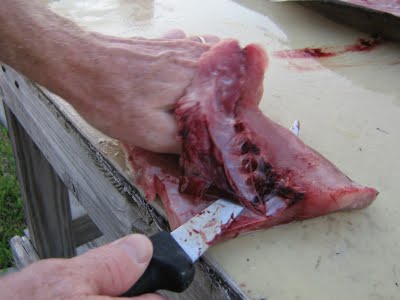
If the jack is small you might only get one bait per side. This jack is big enough for two baits from each side.
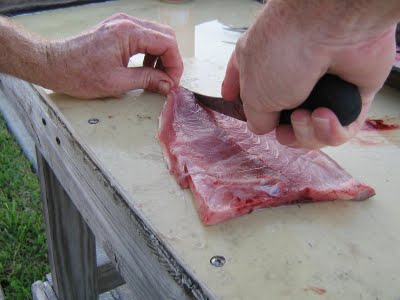 Next cut the general shape of the strip bait from the fillet, tapering the shape as you get closer to the tail end. Now start refining the shape cutting away any irregular edge.
Next cut the general shape of the strip bait from the fillet, tapering the shape as you get closer to the tail end. Now start refining the shape cutting away any irregular edge.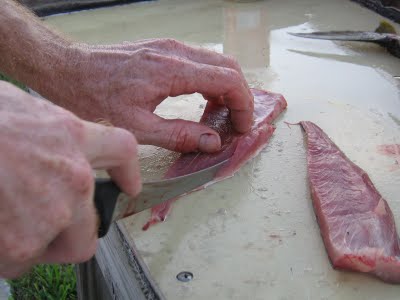
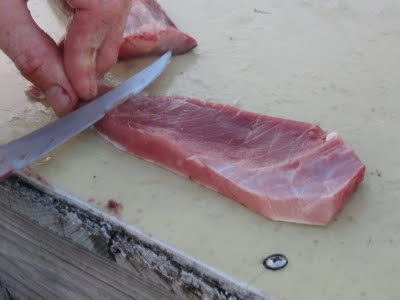
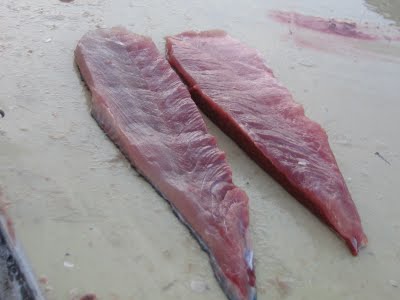
Once you have the shape and thickness of the strip bait you will need to make a small cut near the top of the bait. This is needed for rigging.
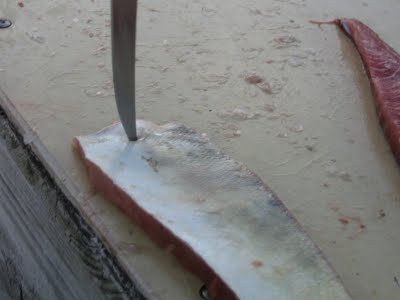
To rig the bait, the easiest leader to use is wire. It will also keep the kingfish from cutting the line.
To use the bait for bottom fishing, slide the hook through the small cut at the top of the bait then stick the hook through the boat about half way down. This will let the bait flutter in the current and drive the grouper crazy.
Storing Strip Baits
The best part about this type of bait, is that it freezes very well. If I am planning on storing a lot of baits I will usually salt the meat sides and lay them flat in a freezer bag with 4 baits per bag. Since I plan on using these this week, I just put them in a sandwich bag and put them in the freezer.
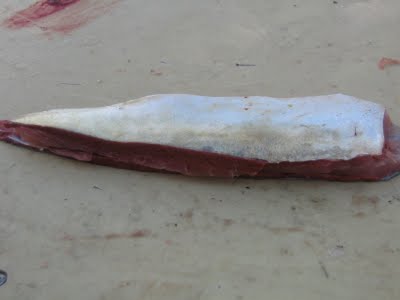
The best thing about the strip baits is they are very tough and the kingfish and grouper love them (if you are really adventurous, the tuna, dolphin and sailfish like them too). The big bonus is that you can catch all the jacks you want and have fun doing it.
Good Luck
Zippyjr
Labels: grouper bait, grouper fishing, kingfish, knigfish bait, trolling

